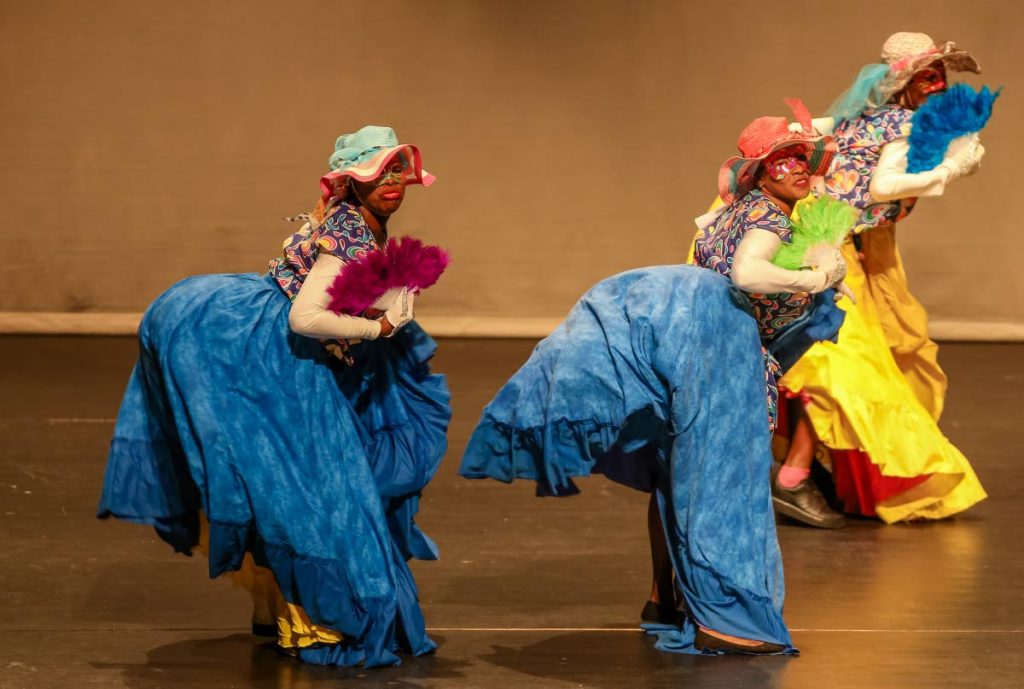Protest mas –jab molassie and dame Lorraine

THE jab molassie and the dame Lorraine might seem like an unlikely pair, but they share the same function as Carnival protest characters.
As one of the many devil masquerades, the jab molassie, smeared with grease or mud and scantily dressed in short pants, found his way into Carnival as the molasses devil, who probably started some of the fires he had been summoned to put out. No one doubts that canefield arson was a satisfying and effective form of protest against plantation owners.
The jab molassie mas paid homage to enslaved people but evolved into a mischievous devil with a tail who blows a conch shell or horn, as slave masters once did when they summoned enslaved people to assemble in a burning cane field to put out a fire.

Modern jab molassies beat rhythms on Crix tins to make noise as they parade through the streets. Their rude gestures and dance defy conventional behaviour that enslaved people were forced to observe. Decked out in cosquel colours and an oversized floppy hat, the Dame Lorraine, with her well-padded backside and super-sized bosom, performs her own sense of protest in ole mas. Her fashion statement mocks the French plantation mistress, who fancied herself as an aristocrat. While the mistress dressed up in her finery for the plantation’s Carnival ball on Dimanche Gras night, enslaved people watched, and later mimicked the finery, down to the fan – and it was the men who played at being the mistresses. Dame Lorraines have their own songs, which further enhances their playful form of protest.
Using dress as a form of protest was not new to the Caribbean. In The Language of Dress, Steeve O Buckridge writes of Jamaican women overdressing in colourful clothes and large hats to poke fun at colonial ladies. The Dame Lorraine has immortalised that tradition in Carnival, creating her own humorous protest mas.
\


Comments
"Protest mas –jab molassie and dame Lorraine"